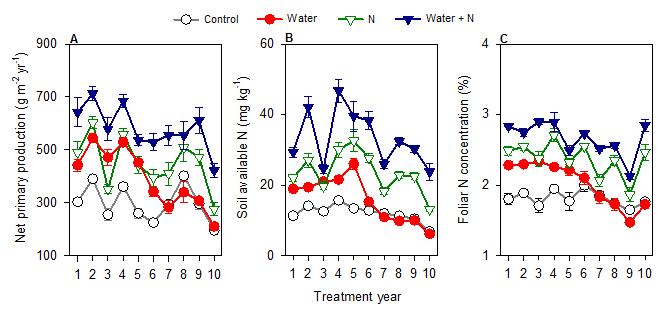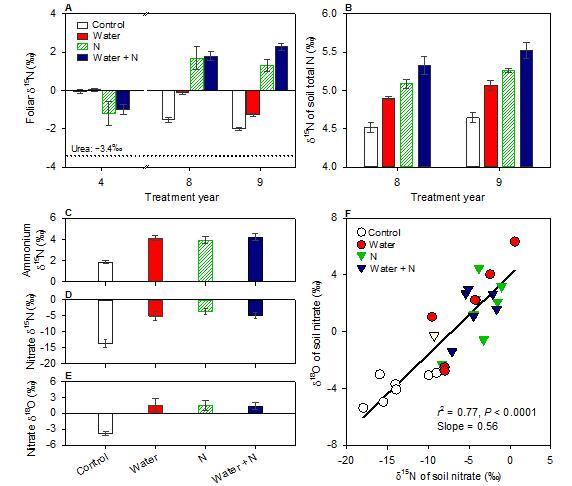No Stimulation on Plant Productivity after Long-term Experimental Precipitation Increase in a Typical Temperate Grassland, Northern China
Anthropogenic carbon emissions from fossil fuel combustion and land use changes are expected to significantly increase global atmospheric CO2 concentrations and surface temperatures, and consequently alter the global hydrological cycle. Various patterns of precipitation change at local and global scales have been predicted.
In arid and semiarid regions, the projected increases in precipitation could enhance plant productivity, which then enhance food production and/or ecosystem carbon storage, thereby dampening future climate change.
However, the existing evidence for the precipitation control on grassland productivity comes primarily from observational studies along natural gradients or from short-term manipulative experiments. It remains unclear whether long-term increased precipitation can persistently stimulate grassland productivity.
Prof. FANG Yunting's lab and Prof. JIANG Yong’s lab from the Institute of Applied Ecology of the Chinese Academy of Sciences, in collaborating with Prof. HAN Xingguo's team from the Institute of Botany, therefore, designed a long-term field experiment to explore the decadal trend in the effects of water and N addition on net primary production in the world's largest remaining temperate grassland in northern China.
The researchers found that experimentally increased precipitation enhanced net primary production, soil available nitrogen and foliar nitrogen concentrations during the first six years of the study, but it ceased to do so in the following four years, unless nitrogen was simultaneously added with water (Fig. 1).
The 15N enrichment of plant and soil nitrogen pools in later years indicates increased nitrogen losses, which exacerbated nitrogen limitation and ended the productivity stimulation by increased precipitation (Fig. 2).
This study demonstrates that the long-term response of grassland ecosystems to increased precipitation will be mediated by nitrogen availability.
The results also point to a shift from co-limitation by water and nitrogen early on to perhaps limitation dominated by nitrogen later in this temperate grassland, highlighting significant variations in the type of resource limitation induced by climate change.
This study was published online in Ecological Monographs entitled "Exacerbated nitrogen limitation ends transient stimulation of grassland productivity by increased precipitation".
The work was financially supported by the Ministry of Science and Technology, Chinese Academy of Sciences, National Natural Science Foundation of China and China Postdoctoral Science Foundation. Dr. REN Haiyan, a postdoctoral scientist from Prof. FANG's lab, and Dr. XU Zhuwen from Prof. JIANG's lab, are co-first authors of the Ecological Monographs publication.

Fig 1. Effects of water and nitrogen (N) addition on net primary production (the sum of above- and below-ground productivity), soil N availability (nitrate plus ammonium) and foliar N concentration (Image by REN Haiyan).

Fig 2. (A, B) Effects of water and nitrogen (N) addition on the δ15N signatures of foliage and soil total N. (C–E) Effects of water and N addition on δ15N and δ18O of soil available N in year 9 of the study. (F) Relationship between soil nitrate δ18O and δ15N across all treatments. Soil denitrification might be an important N loss pathway under water addition, as indicated by strong 15N enrichment of soil KCl-extracted NO3- and the significant correlation between δ18O and δ15N.Error bars show one standard error of the mean. The δ15N of urea (the form of N applied) is –3.4‰ (Image by REN Haiyan).
Publication Name: REN Haiyan; XU Zhuwen; ISBELL Forest; HUANG Jianhui; HAN Xingguo; WANG Shiqiang; CHEN Shiping; WANG Ruizhen; ZENG De-hui; JIANG Yong; FANG Yunting.
Email:renhy@iae.ac.cn.



